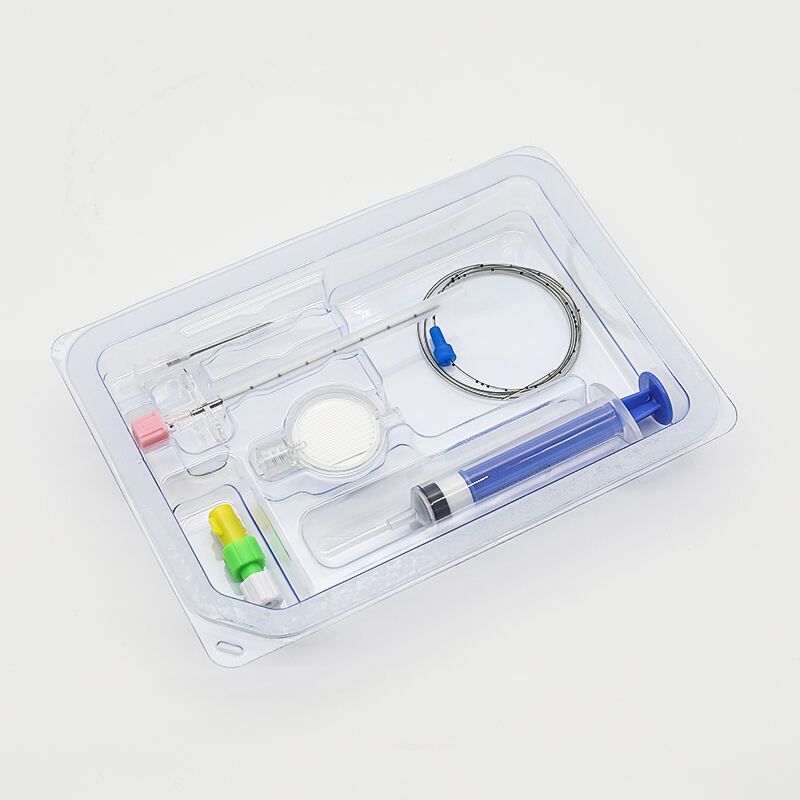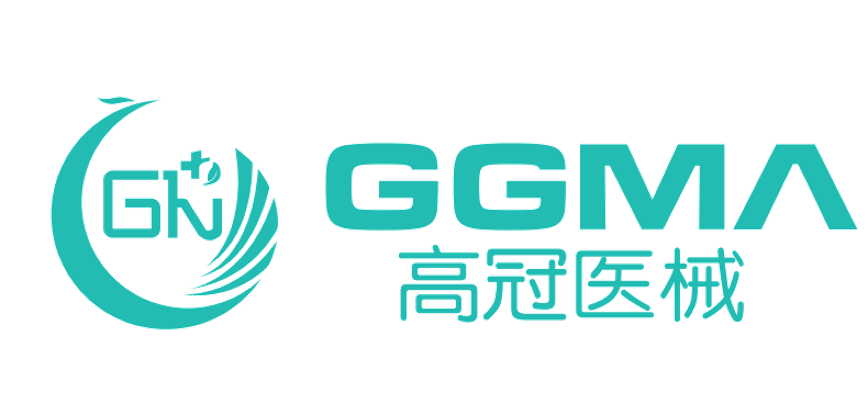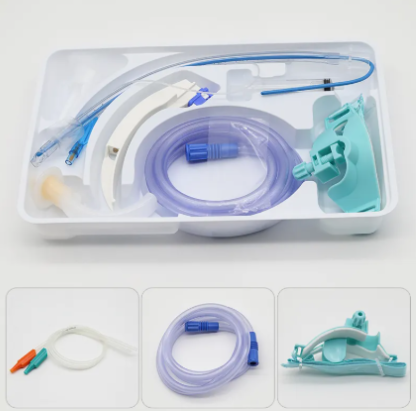ส่วนประกอบหลักของชุดอุปกรณ์วิสัญญี
เครื่องมือในการจัดการทางเดินหายใจสำหรับการระบายอากาศที่ปลอดภัย
การจัดการทางเดินหายใจอย่างเหมาะสมมีความสำคัญอย่างยิ่งในการรักษาความปลอดภัยในการหายใจของผู้ป่วยขณะให้ยาสลบ มีเครื่องมือหลายประเภทที่ใช้ได้ ตั้งแต่ท่อใส่หลอดลม (endotracheal tubes) หน้ากากหลอดลม (laryngeal masks) และทางเดินหายใจทางปาก-คอ (oropharyngeal airways) ซึ่งแต่ละชนิดออกแบบมาเพื่อใช้ในสถานการณ์เฉพาะ ท่อใส่หลอดลมจะถูกสอดผ่านกล่องเสียง ซึ่งช่วยป้องกันไม่ให้เกิดการอุดตันระหว่างการผ่าตัด แพทย์หลายคนนิยมใช้หน้ากากหลอดลมเพราะสามารถใส่ได้รวดเร็วและอยู่เหนือกล่องเสียง ทางเดินหายใจทางปาก-คอช่วยรักษาทางเดินหายใจให้โล่ง โดยหลักคือป้องกันไม่ให้ลิ้นอุดกั้นกระแสลมหายใจ การเลือกขนาดและชนิดที่เหมาะสมมีความสำคัญมาก โดยเฉพาะอุปกรณ์ที่ใช้กับเด็กซึ่งแตกต่างจากผู้ใหญ่อย่างสิ้นเชิง การตัดสินใจอย่างชาญฉลาดในจุดนี้ไม่ใช่แค่การปฏิบัติตามขั้นตอนเท่านั้น แต่ยังส่งผลโดยตรงว่าผู้ป่วยจะได้รับออกซิเจนเพียงพอหรือไม่ระหว่างการผ่าตัด นักวิสัญญีที่มีประสบการณ์ส่วนใหญ่ยืนยันว่า ความตัดสินใจเลือกอุปกรณ์นี้สามารถทำให้เกิดความแตกต่างระหว่างการดำเนินการที่ราบรื่นกับภาวะแทรกซ้อนที่อาจตามมา
ระบบการส่งยาและการเข้ากันได้ของยา
ชุดยาสลบ มาพร้อมกับวิธีการส่งยาต่างๆ ที่หลากหลาย ได้แก่ เข็มฉีดยา ปั๊มให้สารน้ำ และเครื่องพ่นละอองยา ซึ่งช่วยให้ยาไปถึงตำแหน่งที่ต้องการได้อย่างแม่นยำ เข็มฉีดยาช่วยให้แพทย์สามารถวัดขนาดยาที่ต้องใช้ออกได้อย่างแม่นยำ ซึ่งเป็นสิ่งสำคัญมากเมื่อจัดการกับยาที่มีฤทธิ์แรง ปั๊มให้สารน้ำจะช่วยรักษาระดับการไหลของยาอย่างสม่ำเสมอตลอดการผ่าตัดที่ใช้เวลานาน ทำให้ความเข้มข้นของยารักษาไว้ในระดับที่เหมาะสมอย่างต่อเนื่อง ส่วนเครื่องพ่นละอองยานั้นใช้สำหรับยาสลบที่เป็นก๊าซ ซึ่งช่วยให้ผู้ป่วยสามารถหายใจเอาเข้าไปได้อย่างรวดเร็ว แต่ไม่ใช่แค่เพียงการเลือกอุปกรณ์ที่เหมาะสมเท่านั้นที่สำคัญ เรื่องความเข้ากันได้ของยาถือว่ามีความสำคัญอย่างมากเช่นกัน การผสมยาบางชนิดเข้าด้วยกันอาจก่อให้เกิดปัญหา และเราเคยเห็นกรณีมามากมายที่การผสมยาที่ไม่เข้ากันส่งผลให้เกิดภาวะแทรกซ้อนร้ายแรงระหว่างการผ่าตัด นั่นคือเหตุผลที่โรงพยาบาลต้องใช้เวลาในการตรวจสอบความเข้ากันได้ของยาแต่ละชนิดก่อนจะบรรจุลงในชุดอุปกรณ์เหล่านี้
เครื่องมือเฝ้าระวังสำหรับการประเมินผู้ป่วงแบบเรียลไทม์
ชุดอุปกรณ์วิเคราะห์ยาสลบจะไม่สมบูรณ์หากปราศจากอุปกรณ์ตรวจสอบที่รวบรวมข้อมูลของผู้ป่วยในขณะที่อยู่ภายใต้ฤทธิ์ยา ตัวอย่างเช่น เครื่องวัดออกซิเจนในเลือดปลายนิ้ว (pulse oximeters) ซึ่งเป็นอุปกรณ์เล็กๆ ที่ยึดติดกับนิ้ว มีเครื่องวัดระดับคาร์บอนไดออกไซด์ในลมหายใจ (capnography machines) และเครื่องตรวจคลื่นไฟฟ้าหัวใจ (ECG monitors) ที่ใช้ตรวจสอบกิจกรรมของหัวใจ ทั้งหมดนี้มีบทบาทของตนเอง เครื่องวัดออกซิเจนในเลือดปลายนิ้วจะบอกระดับออกซิเจนที่ส่งไปยังเนื้อเยื่อ ขณะที่การวัดคาร์บอนไดออกไซด์ในลมหายใจบอกถึงระดับ CO2 ที่หายใจออก และ ECG จะแสดงจังหวะการเต้นของหัวใจเพื่อให้เราสามารถติดตามผลได้ตลอดขั้นตอนการผ่าตัด การมีข้อมูลแบบต่อเนื่องนี้มีความสำคัญอย่างมากในการตัดสินใจอย่างรวดเร็วระหว่างการผ่าตัด ความปลอดภัยของผู้ป่วยขึ้นอยู่กับระบบนี้ไม่เพียงแต่ในระหว่างการดำเนินการเท่านั้น แต่ยังรวมถึงช่วงเวลาฟื้นตัวหลังจากนั้นด้วย ผู้เชี่ยวชาญด้านวิสัญญีวิทยาที่มีประสบการณ์สูงหลายคนยืนยันว่า การอ่านค่าที่แม่นยำจากเครื่องมือเหล่านี้คือสิ่งที่ทำให้สามารถตรวจพบปัญหาได้ตั้งแต่แรกเริ่ม หรืออาจพลาดหากเกิดการเปลี่ยนแปลงอย่างกะทันหัน
คุณสมบัติความปลอดภัยในชุดยาสลบสมัยใหม่
กลไกป้องกันความล้มเหลวเพื่อป้องกันการใช้ยาเกินขนาด
ชุดอุปกรณ์ยาสลบในปัจจุบันมาพร้อมกับคุณสมบัติเพื่อความปลอดภัยหลายอย่างที่ถูกออกแบบมาเพื่อป้องกันการให้ยาเกินขนาดก่อนที่จะเกิดขึ้น สิ่งสำคัญอย่างหนึ่งคือเครื่องคำนวณปริมาณยาอัตโนมัติที่ถูกติดตั้งไว้ในระบบสมัยใหม่หลายระบบ เครื่องมือที่เป็นประโยชน์เหล่านี้จะคำนวณอย่างแม่นยำว่าผู้ป่วยแต่ละรายควรได้รับยาสลบนานเท่าใดโดยคำนึงถึงปัจจัยต่างๆ เช่น น้ำหนักตัวและอายุ การพิจารณาข้อมูลจากประวัติการรักษาของโรงพยาบาลในช่วงไม่กี่ปีที่ผ่านมานั้นเผยให้เห็นสิ่งที่น่าสนใจ นั่นคือเครื่องคำนวณเหล่านี้สามารถลดการให้ยาเกินขนาดโดยไม่ได้ตั้งใจได้จริงอย่างมีนัยสำคัญ ซึ่งส่งผลอย่างชัดเจนในห้องผ่าตัดทั่วทุกแห่ง แพทย์ผู้เชี่ยวชาญด้านวิสัญญีวิทยารู้สึกชื่นชมเครื่องมือเหล่านี้เพราะพวกเขามีความมั่นใจมากขึ้นในสิ่งที่ตนเองกำลังทำอยู่ นั่นหมายความว่าผู้ป่วยจะได้รับการดูแลที่ดีขึ้นในทุกสถานการณ์ทางการแพทย์
การออกแบบตามหลักสรีรศาสตร์เพื่อการตอบสนองฉุกเฉินอย่างมีประสิทธิภาพ
ชุดอุปกรณ์วิเคราะห์ยาที่ได้รับการออกแบบโดยคำนึงถึงหลักสรีรศาสตร์ (Ergonomics) เป็นสิ่งที่ทำให้เกิดความแตกต่างอย่างแท้จริงในสถานการณ์ฉุกเฉิน รูปแบบของชุดอุปกรณ์ทันสมัยที่จัดวางมาอย่างดีนี้ ช่วยให้บุคลากรทางการแพทย์สามารถเข้าถึงชิ้นส่วนสำคัญที่ต้องใช้ทันทีได้อย่างรวดเร็ว รวมถึงเครื่องมือสำหรับทางเดินหายใจและระบบการส่งมอบยาที่จำเป็นอย่างยิ่งในช่วงเวลาวิกฤต ตามที่มีการตีพิมพ์จากงานวิจัยหลายชิ้นในช่วงไม่กี่ปีที่ผ่านมา ระบุว่าการออกแบบที่คำนึงถึงหลักสรีรศาสตร์ที่ดี ช่วยลดข้อผิดพลาดที่เกิดขึ้นภายใต้ความกดดัน เนื่องจากทุกอย่างถูกจัดระเบียบไว้อย่างเป็นระบบและอยู่ในตำแหน่งที่เข้าถึงได้ง่าย เราได้เห็นด้วยตัวเองในห้องผ่าตัด ที่ซึ่งพยาบาลสามารถหยิบอุปกรณ์ที่ต้องการใช้ได้ทันทีโดยไม่ต้องเสียเวลาค้นหา ซึ่งช่วยประหยัดเวลาอันมีค่าและอาจช่วยชีวิตผู้ป่วยไว้ได้ เมื่อผู้ผลิตเริ่มคำนึงถึงว่าอุปกรณ์ของตนจะถูกนำไปใช้ในสภาพแวดล้อมจริงอย่างไร ไม่ใช่แค่ในห้องทดลองเท่านั้น ก็แสดงให้เห็นถึงความห่วงใยที่แท้จริงต่อทั้งเจ้าหน้าที่สาธารณสุขและผู้ป่วย
มาตรฐานการปฏิบัติตามและการรับรอง
แนวทางของ FDA สำหรับอุปกรณ์ยาสลบ
การคุ้นเคยกับกฎระเบียบขององค์การอาหารและยา (FDA) ที่เกี่ยวข้องกับอุปกรณ์วิสัญญีมีความสำคัญอย่างมากในการรักษาความปลอดภัยของผู้ป่วยและให้มั่นใจว่าขั้นตอนการดำเนินการเป็นไปอย่างเหมาะสม แนวทางเหล่านี้เน้นย้ำถึงความจำเป็นในการทดสอบอย่างละเอียดและตรวจสอบคุณภาพให้ดีก่อนที่อุปกรณ์ใด ๆ จะออกสู่ท้องตลาด บริษัทที่ผลิตอุปกรณ์ดังกล่าวจำเป็นต้องปฏิบัติตามขั้นตอนเฉพาะ รวมถึงการยื่นเอกสารก่อนขายผลิตภัณฑ์ รวมทั้งต้องติดตามตรวจสอบผลิตภัณฑ์ต่อเนื่องหลังจากวางจำหน่ายแล้ว แท้จริงแล้ว บริษัทส่วนใหญ่ก็ปฏิบัติตามระเบียบข้อกำหนดเหล่านี้ได้ค่อนข้างดี ซึ่งช่วยส่งเสริมให้สภาพแวดล้อมในโรงพยาบาลและคลินิกดีขึ้น การปฏิบัติตามมาตรฐานขององค์การอาหารและยาไม่ใช่เพียงแค่การรักษาความถูกต้องตามกฎหมายเท่านั้น แต่ยังสร้างความเชื่อมั่นอีกด้วย เมื่อแพทย์เห็นว่าผู้ผลิตยึดมั่นตามข้อกำหนดที่เข้มงวดเหล่านี้ พวกเขามักจะมีความไว้วางใจในเครื่องมือเหล่านั้นมากขึ้น โดยรู้ดีว่าอุปกรณ์เหล่านั้นได้ผ่านกระบวนการตรวจสอบที่เหมาะสมมาแล้ว

ใบรับรอง ISO 13485 สำหรับความปลอดภัยของเครื่องมือทางการแพทย์
การได้รับการรับรองมาตรฐาน ISO 13485 มีความสำคัญอย่างมากต่อบริษัทที่ผลิตชุดอุปกรณ์วิสัญญีกรรม เนื่องจากแสดงให้เห็นว่าบริษัทให้ความสำคัญกับคุณภาพ และจัดการความเสี่ยงได้อย่างเหมาะสมตลอดกระบวนการดำเนินงาน เมื่อผู้ผลิตได้รับการรับรองนี้ หมายความว่าระบบควบคุมคุณภาพของพวกเขาเป็นไปตามมาตรฐานสากลที่เข้มงวดสำหรับอุปกรณ์ทางการแพทย์ ซึ่งช่วยให้ผลิตภัณฑ์โดยรวมมีความปลอดภัยมากยิ่งขึ้น มีการศึกษาหลายชิ้นชี้ให้เห็นว่า การมีมาตรฐาน ISO 13485 ช่วยให้บริษัทมีข้อได้เปรียบในการแข่งขันทางการตลาด เนื่องจากลูกค้ารับรู้ว่าองค์กรเหล่านี้ปฏิบัติตามมาตรการความปลอดภัยที่เข้มงวด สำหรับผู้ผลิตที่ทำงานเฉพาะทางด้านชุดอุปกรณ์วิสัญญีกรรมแล้ว การรักษามาตรฐานคุณภาพที่สม่ำเสมอระหว่างล็อตผลิตต่างๆ จะง่ายขึ้นมากเมื่อมีการรับรองที่เหมาะสม ส่งผลโดยตรงต่อประสิทธิภาพในการดำเนินการผ่าตัดที่ดีขึ้น และสร้างความมั่นใจที่แข็งแกร่งขึ้นให้กับบุคลากรทางการแพทย์ที่พึ่งพาเครื่องมือสำคัญเหล่านี้ในการทำงานทุกวัน
นวัตกรรมในเทคโนโลยีชุดยาสลบ
การรวมระบบตรวจสอบอัจฉริยะสำหรับการดูแลที่แม่นยำ
การเพิ่มเทคโนโลยีการตรวจสอบอัจฉริยะเข้าไปในอุปกรณ์วิเคราะห์ยาสลบ ได้เปลี่ยนแปลงอย่างแท้จริงถึงความแม่นยำและประสิทธิภาพของการดูแลรักษาทางการแพทย์ ด้วยเครื่องมือใหม่เหล่านี้ ข้อมูลทั้งหมดของแพทย์จะถูกซิงค์เข้าด้วยกันโดยอัตโนมัติ และถูกวิเคราะห์แบบทันทีทันใด ซึ่งช่วยให้พวกเขาสามารถตัดสินใจได้ดีขึ้นในระหว่างการผ่าตัด ระบบอัจฉริยะจำนวนมากเหล่านี้ยังใช้ปัญญาประดิษฐ์ (AI) ทำงานอยู่เบื้องหลังอีกด้วย ปัญญาประดิษฐ์นี้จะช่วยให้แพทย์สามารถปรับเปลี่ยนสิ่งต่าง ๆ แบบเรียลไทม์ ตามสถานการณ์เฉพาะตัวของแต่ละผู้ป่วย ตัวอย่างเช่น หากผู้ป่วยมีความดันโลหิตลดลงอย่างฉับพลันระหว่างการผ่าตัด ระบบอาจส่งสัญญาณเตือนวิสัญญีแพทย์ก่อนที่สถานการณ์จะเลวร้ายจนเกินควบคุม การจัดการการให้ยาสลบที่ดีขึ้นนี้ ส่งผลโดยตรงต่อผลลัพธ์ที่ดีขึ้นโดยรวมสำหรับผู้ป่วย สิ่งที่เรากำลังเห็นอยู่นี้ ไม่ใช่เพียงแค่อุปกรณ์เทคโนโลยีที่ดูหรูหราเท่ห์ ๆ แต่คือความก้าวหน้าที่เป็นรูปธรรมในทางการแพทย์ ซึ่งช่วยให้การผ่าตัดปลอดภัยมากขึ้น และลดความเสี่ยงต่อทุกฝ่ายที่เกี่ยวข้อง
ระบบจ่ายก๊าซยาสลบแบบอนุรักษ์ธรรมชาติ
สถานพยาบาลทั่วประเทศกำลังเริ่มนำระบบก๊าซยาสลบที่เป็นมิตรต่อสิ่งแวดล้อมมาใช้เป็นส่วนหนึ่งของความพยายามลดผลกระทบต่อสิ่งแวดล้อมที่เกิดจากการดำเนินงานตามปกติ ระบบใหม่เหล่านี้ทำงานแตกต่างจากระบบแบบดั้งเดิม โดยปล่อยก๊าซที่เป็นอันตรายน้อยกว่ามาก พร้อมทั้งใช้วัสดุที่สามารถนำกลับมาใช้ใหม่หรือกำจัดได้อย่างปลอดภัย ตามการวิเคราะห์ตลาดล่าสุด โรงพยาบาลหลายแห่งได้หันมาใช้ทางเลือกที่เป็นมิตรต่อสิ่งแวดล้อมมากขึ้นสำหรับการให้ยาสลบในช่วงไม่กี่ปีที่ผ่านมา ส่วนหนึ่งมาจากความตระหนักที่เพิ่มขึ้นของแพทย์และเจ้าหน้าที่เกี่ยวกับการจัดการผลพลอยได้หลังการผ่าตัด อีกทั้งยังมีแรงกดดันจากหน่วยงานกำกับดูแลที่ต้องการให้ผู้ให้บริการด้านสุขภาพบรรลุเป้าหมายความยั่งยืนที่กำหนดไว้ การเปลี่ยนมาใช้แนวทางที่เป็นมิตรต่อสิ่งแวดล้อมนี้ไม่เพียงแค่ดีต่อโลกเท่านั้น แต่ยังมีประโยชน์ในเชิงปฏิบัติการด้วย เพราะระบบที่ว่านี้มักจะปลอดภัยกว่าสำหรับผู้ป่วย และต้องการการบำรุงรักษาที่น้อยลงโดยรวม เราเห็นการเคลื่อนไหวนี้ยังคงมีแนวโน้มเติบโตต่อเนื่อง เมื่อผู้ผลิตพัฒนานวัตกรรมที่ดีขึ้นซึ่งไม่กระทบต่อประสิทธิภาพทางคลินิก ขณะเดียวกันก็ปกป้องสิ่งแวดล้อมของเรา
คำถามที่พบบ่อย
ประโยชน์ของการใช้เทคโนโลยีการตรวจสอบอัจฉริยะในชุดยาสลบคืออะไร?
เทคโนโลยีการตรวจสอบอัจฉริยะช่วยเพิ่มประสิทธิภาพในการวิเคราะห์ข้อมูลและการเชื่อมโยง ทำให้เกิดความแม่นยำมากขึ้นในด้านการดูแลและช่วยให้สามารถปรับเปลี่ยนได้ทันทีตามความต้องการของผู้ป่วย
กลไกป้องกันความล้มเหลวช่วยป้องกันการใช้ยาเกินขนาดในชุดยาสลบอย่างไร?
กลไกป้องกันความล้มเหลว เช่น เครื่องคำนวณปริมาณยาอัตโนมัติ ช่วยให้มั่นใจในการให้ยาที่แม่นยำตามข้อมูลเฉพาะของผู้ป่วย ลดความเสี่ยงของการใช้ยาเกินขนาดอย่างมาก
ทำไมการรับรอง ISO 13485 ถึงสำคัญสำหรับผู้ผลิตชุดยาสลบ?
การรับรอง ISO 13485 แสดงถึงการปฏิบัติตามมาตรฐานความปลอดภัยสูงและการพัฒนาอย่างต่อเนื่อง ส่งเสริมความปลอดภัยของผลิตภัณฑ์และความสามารถในการแข่งขันในตลาด
ระบบการจ่ายก๊าซยาสลบแบบเป็นมิตรต่อสิ่งแวดล้อมช่วยให้สิ่งแวดล้อมได้อย่างไร?
ระบบเป็นมิตรต่อสิ่งแวดล้อมลดการปล่อยก๊าซเรือนกระจกและใช้วัสดุที่ยั่งยืนพร้อมกระบวนการส่งเสริมการอนุรักษ์สิ่งแวดล้อมในทางการแพทย์

